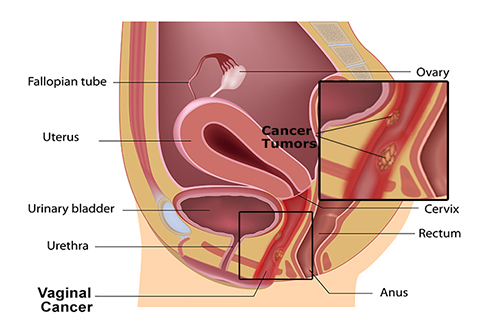
Vaginal cancer is a disease in which malignant (cancer) cells form in the vagina. The vagina is the canal leading from the cervix (the opening of uterus) to the outside of the body. At birth, a baby passes out of the body through the vagina (also called the birth canal).Vaginal cancer is not common.
The treatment of vaginal cancer depends on the size and stage of tumor. It also depends on the location of the tumor in relation to urethra and anus. Surgery is done in early cases and for advanced stages patient gets radiation therapy.
The following tests and procedures may be used:
